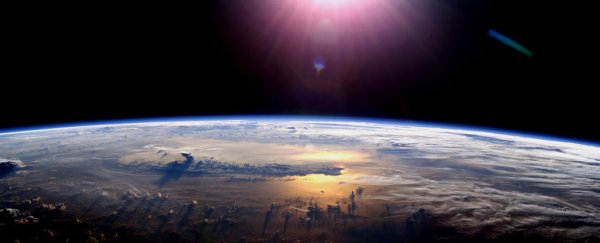A new study suggests that when it comes to finding habitable planets that could support alien life, there may be far fewer suitable worlds than we previously thought.
According to the research, current estimates of planetary habitability based on the so-called Goldilocks zone – being the right distance from the Sun to sustain life – don't take into account another crucial factor needed for life to exist on a planet: the internal temperature when the world formed.
The problem isn't so much with the Goldilocks zone itself, says geophysicist Jun Korenaga from Yale University, but with our understanding of how planets regulate their temperature by a process called mantle convection.
To backtrack a little, planets within the Goldilocks zone of a star are considered potentially habitable because they're the right distance from their sun for liquid water to exist on their surface.
Basically, these planets can't be so far away from their sun that any liquid water necessary to sustain life would freeze, but they also can't be too close, because then the star's intense heat would make the water evaporate.
So the potential for liquid water to exist on a planet's surface is strongly related to the planet's surface temperature.
But there's another factor that can influence a planet's surface temperature – mantle convection. This describes how underground tectonic movements alternately heat and cool the internal temperature of a planet, as rocks shift around, dispersing or containing heat.
Scientists used to think that most planets were capable of self-regulating their temperature in this way, which could lead to some worlds settling upon the right temperature to sustain life.
But that's where Korenaga's new study suggests we might be mistaken, finding that the initial internal temperature of the planet when it first forms has a far greater influence on its potentially habitability than any self-regulation that goes on afterwards.
"If you assemble all kinds of scientific data on how Earth has evolved in the past few billion years and try to make sense out of them, you eventually realise that mantle convection is rather indifferent to the internal temperature," he says.
Using a new mathematical framework to calculate how this self-regulation works, Korenaga suggests that Earth-like planets are unlikely to affect their own internal temperatures in this way, meaning the right conditions for habitability – in addition to the world falling within the Goldilocks zone – depend upon the initial temperature of the world when it first forms.
"Studies on planetary formation suggest that planets like Earth form by multiple giant impacts [of cosmic matter], and the outcome of this highly random process is known to be very diverse," explains Korenaga.
"What we take for granted on this planet, such as oceans and continents, would not exist if the internal temperature of Earth had not been in a certain range, and this means that the beginning of Earth's history cannot be too hot or too cold."
In other words, in addition to falling within the Sun's habitable zone, Earth was lucky enough – or rather, we were lucky enough – to have the right kind of temperature when the planet first took shape some 4.5 billion years ago, as internal temperature shifts even over a very long time period wouldn't have had a significant effect.
If Korenaga's calculations are correct, it could mean that many of the exoplanets scientists are finding that exist within the Goldilocks zone of their stars are not as habitable as we first thought – making the job of searching for alien life outside our Solar System an even tougher gig than it already was.
"The lack of the self-regulating mechanism has enormous implications for planetary habitability," says Korenaga.
But just how enormous are those implications? While it's too early to be sure, if the calculations pan out, Korenaga thinks it could dramatically cut down on the number of actually habitable candidate planets out there.
"Though it's difficult to be specific about how much, it surely does reduce the number of habitable worlds," Korenaga told Dave Mosher at Business Insider. "Most … previous studies have assumed that Earth-like planets self-regulate, and we need to lift the assumption and become much more open-minded… [A] planet like Earth could well be the one of a kind in the Universe."
But other scientists are still optimistic, noting that there's still a lot we don't know about plate tectonics, and there may be worlds out there that – due to their proximity to the Sun – may find the right temperature for liquid water without the need for mantle convection.
"[R]ocky planets are very common," planetary scientist Sara Seager from MIT, who was not involved in the study, told Business Insider. "[D]espite the expectations of huge planet diversity and the implications, there will still be a large number of planets that are habitable no matter what we think is required."
While it might be disappointing to think that the number of potentially habitable exoplanets scientists are finding could be far fewer than we thought, thanks to Korenaga's findings, the good news is that this research could actually help narrow down the search. With this information, scientists might be able to zero in on worlds that offer the best chances of supporting alien life. Fingers crossed, folks.
The findings are published in Science Advances.
